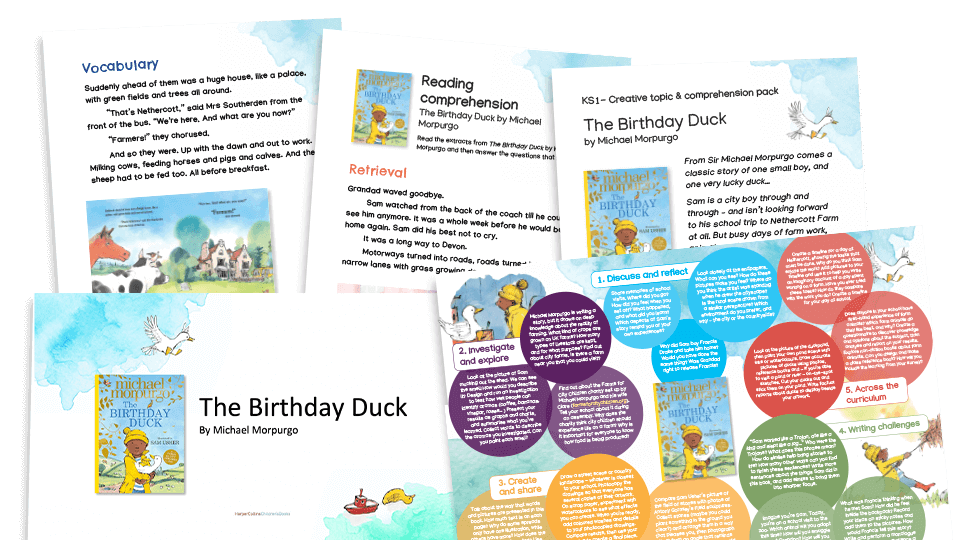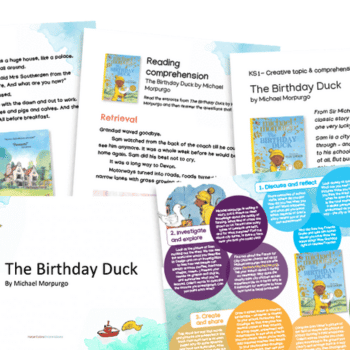PowerPoint, comprehension worksheet, teacher notes & topic map
KS1
Years 1-2
What is The Birthday Duck by Michael Morpurgo about?
The main character in The Birthday Duck, Sam, is a city boy through and through. He isn’t looking forward to his school trip to Nethercott Farm at all.
But busy days of farm work, animals and learning all about nature weave their magic. When Sam finds a duck about to be dinner, he is determined to save him. But how?
The Birthday Duck is a warm and magical story by Michael Morpurgo. Talented illustrator Sam Usher has gloriously brought the story to life.
The story is set on the real-life Nethercott Farm. This is part of the Farms for City Children charity that offers urban children from all over the country the chance to live and work together in the English countryside.
What’s included?

This KS1 reading comprehension resource includes a creative topic map with engaging ideas for using the book as the focus for work across the curriculum, and a set of comprehension questions.
Print out the topic map at A3 size so there’s room for you to add extra notes during your planning session.
The comprehension sheets use extracts from the book (pages 3-9 and 11-12). Questions follow each extract. These each focus on a different reading domain. The questions develop pupils’ comprehension skills of:
- retrieval
- vocabulary
- inference
- sequencing
- prediction
Inside this Birthday Duck comprehension resource:
- Topic map
- PowerPoint slides with example comprehension questions focusing on: retrieval, vocabulary, inference and sequencing
- Pupil worksheets with comprehension questions focusing on: retrieval, vocabulary, inference, sequencing and prediction
How to use the resource
Use the comprehension questions to create a reading lesson for your pupils. Alternatively, read the extracts and complete the questions for each content domain in shorter whole-class or guided reading sessions, focusing on the different skills needed when answering comprehension questions.
For each reading domain, we’ve provided an example question on the PowerPoint. You can use this to teach and model comprehension skills.
Pupils can then answer the questions provided on the pupil worksheets, either independently or as part of whole-class or guided work, discussing each question in turn.
The final section focuses on prediction. This question is displayed on the PowerPoint and is also on the pupil worksheets.
Browse more resources for Michael Morpurgo Month in February.

Similar resources
- No Refuge – Graphic novel activities about refugees for UKS2
- Short story writing – Author-led resources for KS1 and KS2
- Christmas activity sheets – KS1 / KS2 fun & educational printables
- Learning gaps – How to ensure no pupil drifts too far
- Writing horror – Write a scary scene with Fear Files: Hide & Seek













